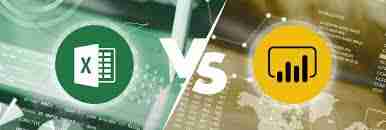# **Power BI Finance Dashboard vs Excel Financial Reporting: Which One Truly Supports Modern Finance Teams?**
Financial reporting has always been at the core of business decision-making. For years, Excel has been the go-to tool for accountants, analysts, and finance managers. It’s familiar, flexible, and widely used across industries. But as businesses grow and financial data becomes more complex, traditional spreadsheets often struggle to keep up. That’s where Power BI steps in—offering interactive dashboards, real-time insights, and automated reporting that Excel simply cannot match.
Understanding the difference between a Power BI Finance Dashboard and Excel-based financial reporting is important for any organization aiming to boost efficiency, accuracy, and data-driven decision-making. Both tools serve a purpose, but their capabilities differ drastically.
---
## **How Excel Supports Financial Reporting**
Excel has been a trusted financial tool for decades. Finance teams rely on it for budgeting, forecasting, variance analysis, and day-to-day financial tasks. Its strengths mainly lie in its simplicity:
* Easy to use for basic calculations and data entry
* Flexible enough to build custom financial models
* Familiar interface understood by almost everyone in the finance world
* Great for quick analysis, pivot tables, and one-off reports
However, as financial data expands across multiple departments, systems, and formats, Excel starts to show limitations. Manual data entry increases the risk of errors. Version control becomes painful when multiple people share the same file. And static spreadsheets cannot offer interactive views or real-time updates.
This is where Excel begins to fall short for modern financial reporting needs.
---
## **Power BI Finance Dashboard: A Modern Approach**
Power BI transforms financial reporting into a dynamic, visual, and automated process. Instead of working with multiple spreadsheet tabs, finance teams get a unified view that brings revenue, expenses, profit margins, cash flow, and KPIs into one interactive dashboard.
Key advantages include:
* Automated data refreshes from live sources
* Easy-to-read charts, visuals, and KPI indicators
* Drill-down analysis to understand trends in seconds
* Eliminates manual dependency and repetitive tasks
* Offers a single source of truth for all financial metrics
A Power BI Finance Dashboard doesn’t just present numbers—it tells a story. It allows stakeholders to explore data intuitively and uncover insights that are often hidden in spreadsheets.
---
## **Accuracy and Reliability: Power BI Wins**
One of the biggest challenges with Excel is the risk of human error. A wrong formula or an accidental deletion can break an entire report. Power BI minimizes this risk through:
* Centralized data models
* Standardized calculations
* Automated data cleaning
* Reduced manual intervention
Once a Power BI dashboard is set up, it updates automatically and maintains consistency across reports. This reliability makes it ideal for CFOs, financial controllers, and leadership teams who depend on accurate, up-to-date insights.
---
## **Data Visualization: The Clear Difference**
Excel offers charts, but they are limited and often become cluttered when dealing with large datasets. Power BI, on the other hand, is built for visualization:
* Interactive charts
* Drill-through options
* Dynamic filters
* Trend analysis
* Real-time KPI tracking
Finance teams can switch views, filter data instantly, and understand patterns more clearly. This creates better presentations, more informed decision-making, and deeper insight into business performance.
---
## **Collaboration and Sharing**
Excel files are usually shared through email, increasing the chances of using outdated versions. Power BI solves this by offering centralized dashboards accessible to authorized users anytime.
* No version mismatch
* Cloud-based dashboards
* Secure role-based access
* Real-time updates for everyone
This level of collaboration makes monthly, quarterly, and yearly reporting faster and smoother.
---
## **When Excel Is Still Useful**
Even with its limitations, Excel still has a place in finance:
* Quick ad-hoc reports
* Small datasets
* Simple calculations
* Early-stage startups with basic financial needs
However, as data grows and teams get bigger, the shift to automated and interactive tools becomes necessary.
---
## **Which Should You Choose?**
If your organization wants speed, accuracy, and deeper financial insight, Power BI clearly stands out. It reduces manual work, provides real-time views, and simplifies complex financial reporting tasks. Excel remains helpful, but it cannot match the intelligence and visualization capabilities offered by Power BI.
In the long run, combining both—Excel for quick analysis and Power BI for reporting—gives finance teams the strongest foundation for informed decision-making.
More Info:https://www.knowledgeexcel.com..../blogs/power-bi/powe






